I’ve always found green to be one of the most underrated paint colors when it comes to kids’ bedrooms.
Blue tends to steal the spotlight, and pink has its loyal fanbase—but green? Green quietly does it all.
It’s playful without being loud, calming without being boring, and flexible enough to work in just about any kind of space.
So when I started putting together this list, I wasn’t just looking for trendy shades.
I wanted colors that actually feel good to live with—day after day, nap after nap, messy toy explosions and all.
Some of these greens are soft and subtle—perfect for a nursery or a room that leans more neutral.
Others are bright and energetic, the kind of colors that practically radiate joy and creativity.
And then there are the deeper greens—the cozy, treehouse-in-the-woods kind of shades that add a sense of calm and comfort.
I chose each one because it brought something special to the table: a unique undertone, a sense of balance, a mood that just works.
So if you’re stuck staring at swatches or second-guessing the green on your shortlist, this post is for you.
I’ve pulled together 21 of the best green paint colors for a kid’s bedroom—colors that are fun, grounded, and full of potential.

Why Choose Green Paint Colors for a Kid’s Bedroom?
Green is a wonderfully versatile color that brings both calm and energy into a space—two things that are surprisingly perfect for a kid’s bedroom.
Depending on the shade, green can be soft and soothing or bright and playful, making it easy to tailor the room to your child’s personality and age.
On a deeper level, green is tied to nature, growth, and balance. It can help create a space where your child feels grounded and at ease.
Soft sage or dusty fern greens can create a cozy, nurturing environment—great for little ones who need a peaceful space to nap, relax, or wind down at night.
On the other side, bright lime or leafy greens add fun and vibrancy, making the room feel energetic and alive—ideal for curious kids who love to play and explore.
And then there’s the bonus: green works well for all genders and ages. It’s a timeless choice that grows well with your child, from toddler to teen.
That means fewer repainting projects over the years and a lot more flexibility with decor.

Tips for Choosing the Best Green Paint Colors for a Kid’s Bedroom
Choosing the right green paint can feel overwhelming—there are so many options out there, and not all of them will work for your space. Here are a few tips that can help narrow it down:
- Pay attention to the undertones. Some greens lean cooler with blue-gray notes, while others lean warmer with yellow or beige undertones. Cool greens often feel more refreshing and modern, while warm greens can feel cozy and earthy.
- Consider the room’s natural lighting. A room with a lot of natural light can handle deeper or bolder greens, while a darker room might benefit from lighter, softer greens that help reflect more light.
- Think about your child’s personality. If they’re high-energy and love to be active, you might gravitate toward a vibrant green that sparks creativity. For a more mellow, sensitive child, softer greens might feel more soothing.
- Use samples and test patches. Paint colors can look very different depending on lighting, time of day, and even what’s on the floor. Don’t skip the swatching stage—it’s the best way to avoid surprises.
- Plan for growth. If you don’t want to repaint every few years, aim for shades that can transition well into older childhood. Classic shades like sage, pine, or mint are often easier to work with long-term.
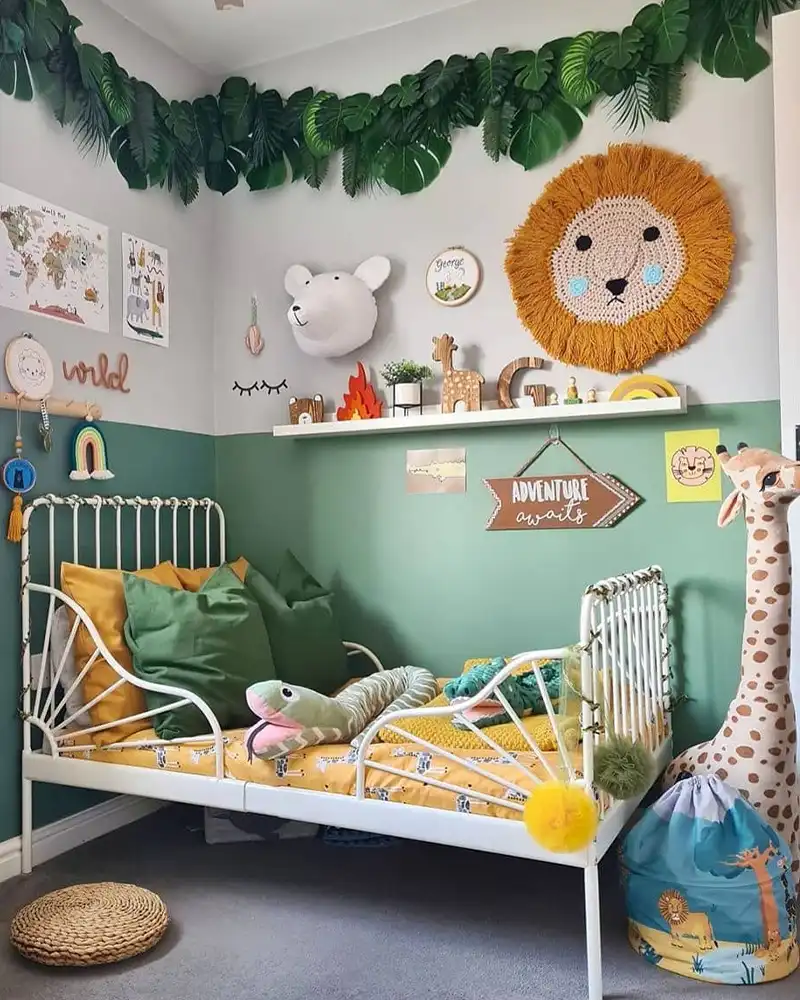
Designing with Green: Pairing Tips
Once you’ve picked the perfect green, it’s time to think about how to pull the rest of the room together. Green is incredibly flexible when it comes to pairing—it can be earthy, modern, playful, or sophisticated depending on what you pair it with.
- Neutrals are your best friend. Crisp whites, soft creams, or light grays create a clean backdrop that lets the green shine. Wood tones—especially natural, blonde, or warm oak—also work beautifully with green and can make the room feel more grounded.
- Add contrast with deeper tones. Pairing soft green walls with navy blue, charcoal, or even deep forest green accents can add just enough depth to the space without overwhelming it.
- For a playful vibe, lean into color. Greens look amazing with yellows, corals, or even pinks in a kid’s room. Think patterned bedding, fun wall art, or a colorful rug. Just keep the brighter colors in smaller doses to keep the space from feeling chaotic.
- Bring in natural elements. Green loves nature—so it makes sense to mix in rattan textures, leafy patterns, or botanical wall decals. These elements complement the color and create a peaceful, organic feel.
- Don’t forget metallics and soft textures. Brass or matte gold light fixtures, cozy blankets, and plush rugs can help balance the energy of green, making the room feel more polished and complete.
The Best Green Paint Colors for a Kid’s Bedroom
Here are my favorite green wall colors for kids bedroom
Soft and Subtle Green Paint Colors for a Kid’s Bedroom
1. Benjamin Moore Soft Fern

Soft Fern is one of those greens that instantly makes a room feel light, calm, and beautifully airy.
It sits right at that sweet spot between green and gray, with just the faintest touch of yellow to warm it up without overpowering the softness.
I’ve always found this color to feel a bit like a whisper—it’s not bold or loud, but it’s incredibly comforting. That’s exactly why it works so well in a kid’s bedroom.
If you’re aiming for a space that feels gentle and relaxing, Soft Fern delivers that with ease.
It also plays really well with warm whites, pale woods, or even dusty pinks and soft blues if you’re layering in accents.
Its undertones keep it from feeling too cool, so it doesn’t become sterile like some other pale greens can.
2. Sherwin Williams Sea Salt

Sea Salt has become a fan favorite for a reason—it’s incredibly versatile, and there’s a magical calming quality about it.
Technically, it’s a green with gray and blue undertones, but depending on the lighting, it can shift between looking soft sage-like to a misty seafoam.
That color-shifting quality gives it depth, which can make a kid’s bedroom feel dynamic without being overwhelming.
I love how it leans into that spa-like serenity, but it still has enough personality that it doesn’t feel flat.
For parents looking to create a restful, grounded space that still feels playful, Sea Salt is such a good pick.
3. Behr Asparagus

Behr Asparagus is a subtle green that’s grounded in nature—it really leans into that soft, leafy feel.
It has just enough yellow in it to give it warmth and brightness, but not so much that it turns olive or chartreuse. It’s still very much in that gentle green category.
What makes Asparagus feel special in a child’s room is how cheerful and fresh it comes across. There’s a liveliness to it, but it doesn’t overwhelm the space.
It’s also one of those shades that works well with natural textures—think woven baskets, light wood cribs or beds, or animal-themed décor.
4. Sherwin Williams Celery
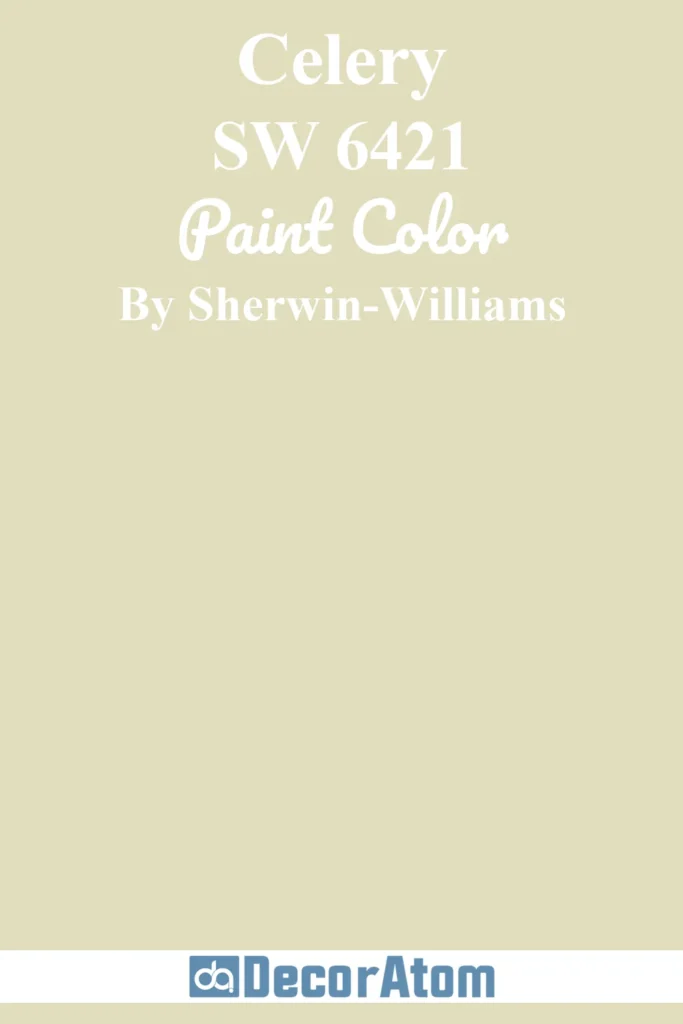
Celery is such a charming and underrated green. As its name suggests, it feels light and clean—almost like the color of a fresh spring day.
It’s a soft yellow-green that carries a brightness without being loud. There’s something very wholesome about it, almost vintage in a way, and it gives off a comforting, nurturing vibe.
It works beautifully in nurseries and younger kids’ rooms, especially when paired with soft whites, buttery creams, or floral patterns.
Celery has that innocence and sweetness that really fits into a room designed for a young child.
It’s gentle on the eyes but still adds a touch of cheerfulness, which makes it a feel-good color through and through.
5. Farrow & Ball Lichen

Now, if you’re looking for a green that feels just a bit more grounded but still very soft and natural, Lichen is a fantastic choice.
It’s a slightly deeper, more muted green compared to the others on this list, and it has a lovely mossy quality to it.
Lichen feels like a walk through a quiet forest—earthy, peaceful, and a little bit magical. I love this color in a kid’s room because it feels so connected to the outdoors.
It has gray undertones that keep it from going too warm, so it feels balanced and serene.
It pairs especially well with natural textures like wool, cotton, or rattan, and it brings an organic calm to the room that’s hard to beat.
6. Benjamin Moore Guilford Green
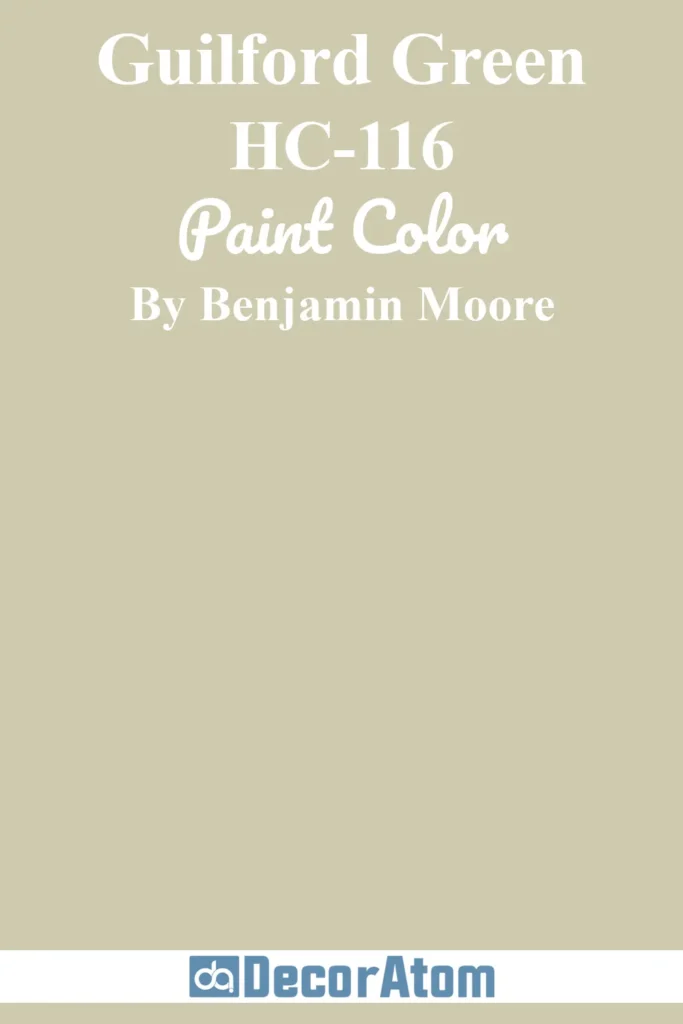
Guilford Green is one of those colors that’s effortlessly elegant while still being approachable and playful enough for a child’s space.
It’s a soft green with a slight silvery undertone, and it has a way of catching light that makes it feel alive.
This shade has a fresh, clean look to it, but it doesn’t feel too cold or sterile—it’s more like a breath of fresh air.
What I like most about Guilford Green is how easy it is to build a palette around it.
You can keep things minimal with whites and woods, or you can add in bolder colors like navy or coral if you want to play with contrast.
It’s a great “grows-with-your-child” shade that doesn’t feel locked into one age or style.
7. Benjamin Moore Saybrook Sage

Saybrook Sage is just such a soft, pretty green. It’s mellow, refined, and has that traditional feel that makes it perfect if you’re going for a classic look in your kid’s bedroom.
The sage tone has just enough gray to keep it feeling calm and subdued, but there’s also a warmth underneath that gives it a little bit of glow—especially in afternoon light.
I think this color works particularly well in shared spaces or rooms that blend play and sleep.
It brings in that earthy, restful vibe without skewing too rustic or trendy.
Saybrook Sage is also a fantastic backdrop for colorful toys or books because it doesn’t compete—it just lets everything else shine.
Vibrant and Energetic Green Colors for a Kid’s Bedroom
These greens bring the fun—they’re playful, full of personality, and perfect for kids who love color and energy in their space.
8. Sherwin Williams Electric Lime
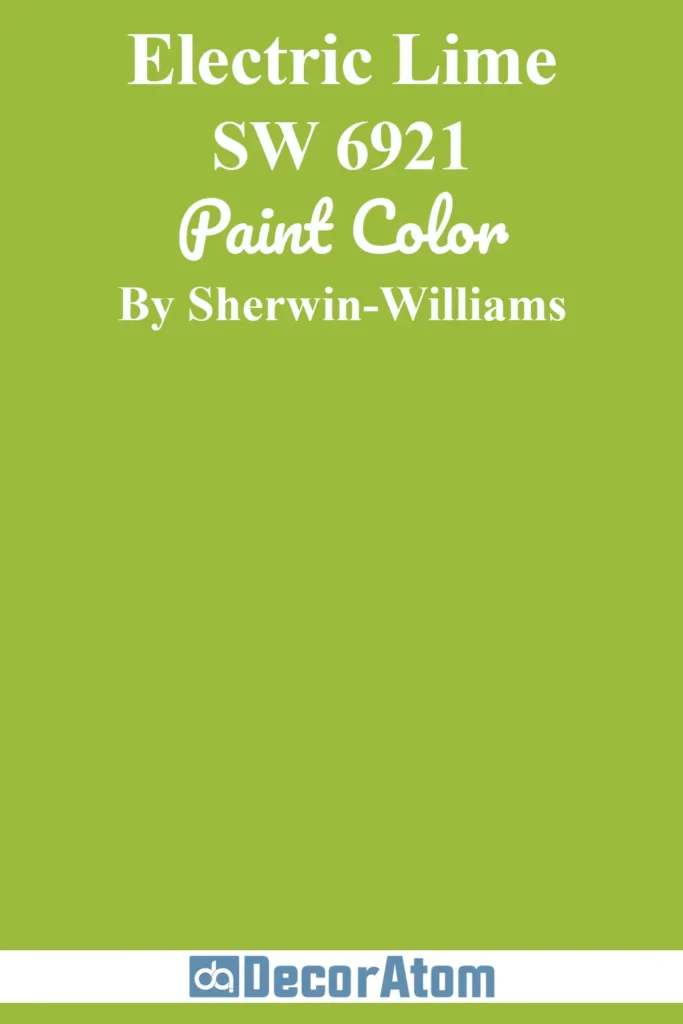
Electric Lime is a showstopper—there’s no denying it. This is not your soft, subtle green; this is the green that pops off the wall and instantly makes a statement.
It’s bright, bold, and packed with high-energy citrusy goodness. Think of the zest of a lime wedge—it’s that exact color, only with a slightly cleaner, more modern finish.
This paint color works especially well in playrooms or for accent walls in a kid’s bedroom.
It’s a favorite for creative kids, the ones who love to draw on every scrap of paper or dance to loud music in their pajamas.
Because it’s so punchy, Electric Lime pairs really well with crisp whites, navy blues, or even hot pink for a real color-forward space.
9. Behr Kiwi Squeeze
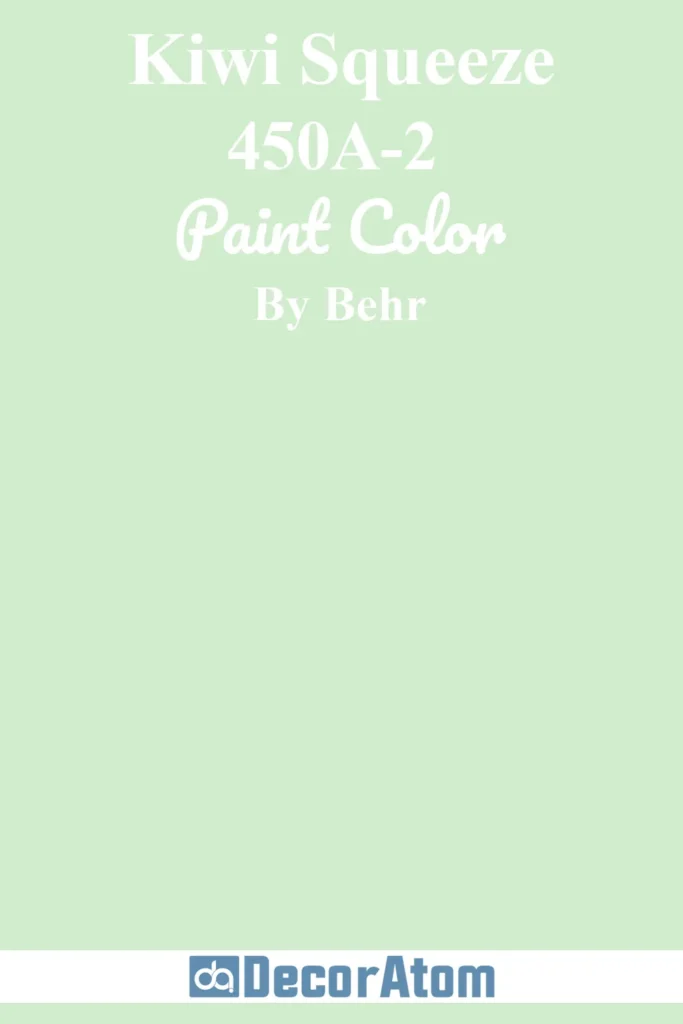
Kiwi Squeeze is pure fun. It has a fresh, fruity brightness to it that instantly wakes up a room.
I’d describe it as a yellow-green that leans more toward chartreuse, but it’s softer and a bit more wearable on the wall than some other intense chartreuse shades.
What makes Kiwi Squeeze so appealing is its joyful tone—it feels like summer vacation bottled into a paint color.
It’s great for kids who thrive in bold, colorful environments, or for parents who want to break away from the usual pastel palette.
10. Sherwin Williams Parakeet
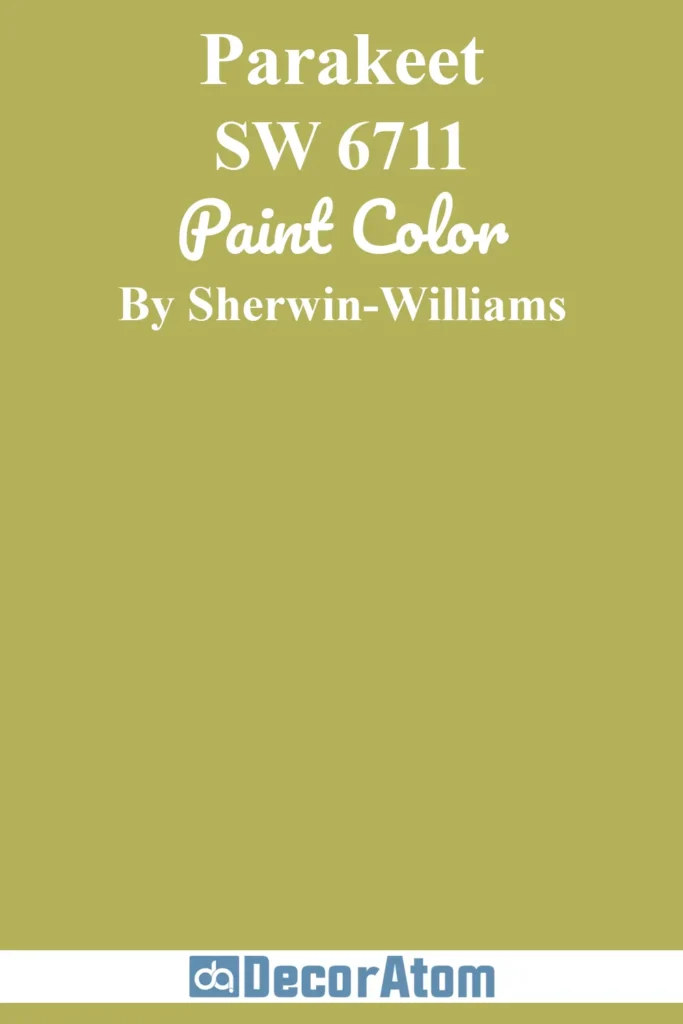
Parakeet is one of those greens that you can’t help but smile at. It has a cheerful, slightly tropical vibe that feels friendly and playful.
The color is rich without being dark, and it balances green and yellow beautifully—it’s like the lively feathers of a tropical bird, which is exactly how it got its name.
This shade brings warmth and brightness to a kid’s room, and it looks fantastic in spaces where you want to encourage creativity and joy.
What makes Parakeet stand out to me is its balance—it’s bold, yes, but it’s also really pleasant to look at. It’s energetic without being overly intense.
Use it with white trim or even pair it with soft corals or blues for a fun, layered look that doesn’t feel too chaotic.
11. Benjamin Moore Lime Green

Lime Green by Benjamin Moore is as juicy and zingy as the name suggests.
It’s vibrant, loud, and full of life—which is exactly what some kids crave in their spaces.
This is a green that knows it’s the center of attention and is completely okay with it.
It’s a bright citrus-green with a yellow undertone that feels almost electric in natural light.
It works beautifully in play-forward spaces and is a favorite for parents who want something youthful and expressive.
Lime Green also pairs surprisingly well with crisp black and white for a bold, graphic look, or you can tone it down a bit with natural textures like jute, rattan, or blonde woods to give it a slightly more grounded feel. Either way, it brings the energy.
12. Farrow & Ball Arsenic
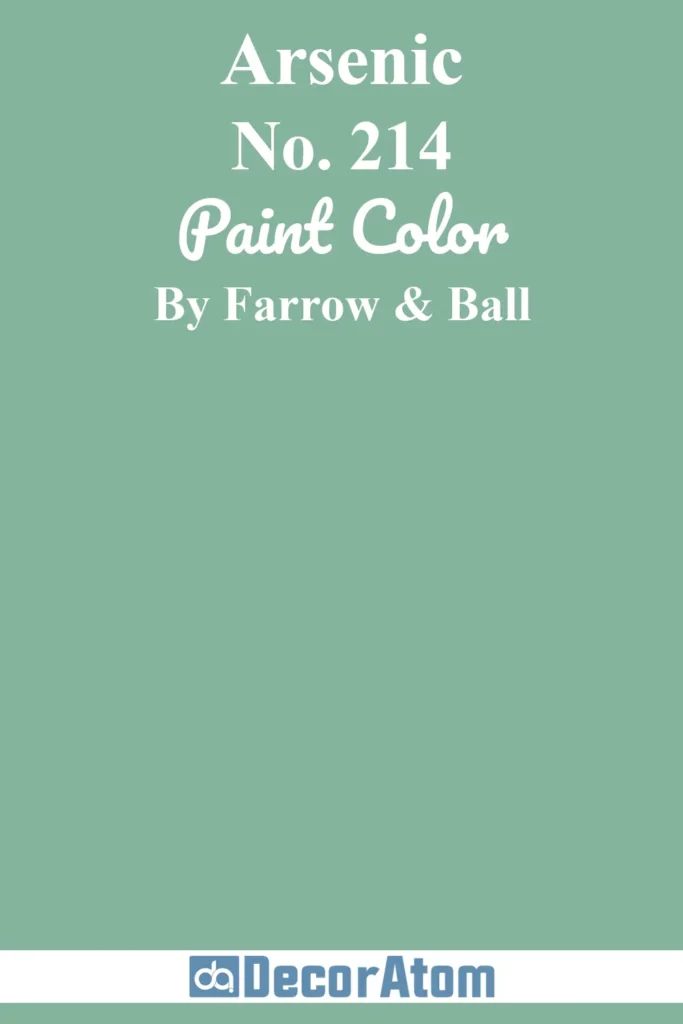
With a name as striking as Arsenic, you might expect something dramatic—and it definitely delivers, but in the most stylish way.
Arsenic is a rich, vibrant green with blue undertones, making it feel cooler and slightly more sophisticated than some of the yellow-based vibrant greens.
It has this retro-modern quality to it, like something you’d see in a mid-century kids’ playroom or an art-forward nursery. It’s bold, yes, but it also has a certain polish that makes it feel elevated.
It’s great for parents who want something lively without going too cartoonish.
In daylight, it glows in this rich teal-ish green way, and under artificial light, it feels cozier and more saturated. Definitely one of the more refined choices in this energetic group.
13. Benjamin Moore Kelly Green

Kelly Green is such a classic—and honestly, I think it’s underrated when it comes to kids’ rooms. It’s a true, pure green—bright but not neon, bold but not dark.
This is the green of clover fields, storybook illustrations, and bright rain boots.
There’s something so universally happy about it. Kelly Green has a clean richness to it with very minimal undertones, which is part of why it looks so solid and consistent on the wall.
It makes a great choice for an accent wall, a bed frame, or even custom-painted furniture in a kid’s space.
Pair it with navy, yellow, or white for a crisp, graphic look that feels both timeless and fun.
It’s one of those colors that doesn’t age out quickly—perfect if you’re planning a space that can grow with your child.
14. Behr Happy Camper

Happy Camper is the most grounded of the vibrant green picks, but it’s still full of personality.
It’s a medium green with a slightly earthy base—imagine the kind of lush greenery you’d find on a family camping trip, hence the name.
It has a soothing natural vibe but still reads as colorful and cheerful. What I love about this one is how balanced it feels—it’s not too warm or too cool, not too loud but definitely not subtle either.
It’s the kind of green that feels right at home with forest-themed décor, adventure maps, wood tones, and cozy plaids.
For kids who love animals, hiking, or just being outside, this is a color that really supports that connection to nature while still feeling vibrant and welcoming indoors.
Dark Green Colors for a Kid’s Bedroom
These shades are deep, grounding, and full of character. Just because they’re darker doesn’t mean they’re too serious for a child’s space. In fact, many of these colors create a cozy, storybook feel that kids love—like building forts in the forest or reading under a blanket with a flashlight. Here we go:
15. Benjamin Moore Hunter Green

Hunter Green is a tried-and-true classic, and there’s a reason it’s still going strong.
This deep, forest-inspired green brings a wonderful sense of tradition, calm, and richness to a room.
It’s a strong color, no doubt—but in a kid’s bedroom, it can create the most magical, woodsy atmosphere. Think treehouses, fairy tales, or camping under the stars.
The hue leans slightly cool with blue undertones, which adds to its grounding effect. Used on all four walls with soft lighting, it makes the room feel like a cocoon.
But if that feels like too much, even just an accent wall or painted bedframe can give the space personality without overwhelming it.
Pair it with warm neutrals or vintage toys for a timeless, cozy vibe.
16. Sherwin Williams Jasper

Jasper is a rich, deep green that leans toward the dramatic end of the spectrum, and I mean that in the best way.
It’s almost blackened-green in certain light—think dense evergreen forests or the deepest shadows beneath the trees.
While it might seem like an unexpected pick for a kid’s bedroom, it’s actually a beautiful backdrop for kids who love moody, imaginative spaces.
It gives off a sense of calm and security, which can be comforting for bedtime routines.
Add in some brass accents, creamy whites, or pops of mustard yellow, and you’ve got a space that feels both grounded and creative.
Jasper is great for older kids or those transitioning from a more playful room to something a bit more grown-up, without losing all the personality.
17. Behr Pine Grove

Pine Grove walks that perfect line between bold and comforting.
It’s a medium-dark pine green with slightly warm undertones that keep it from feeling too chilly or flat.
It evokes the feeling of hiking through a quiet forest or building a treehouse in the woods.
What makes it so versatile is its softness—it has depth, but it’s not so heavy that it weighs down the space.
It’s an excellent choice if you want a dark green that still feels welcoming and child-friendly.
Add in some wood textures, soft plaid bedding, or nature-themed wall art, and it all starts to come together.
18. Sherwin Williams Billiard Green
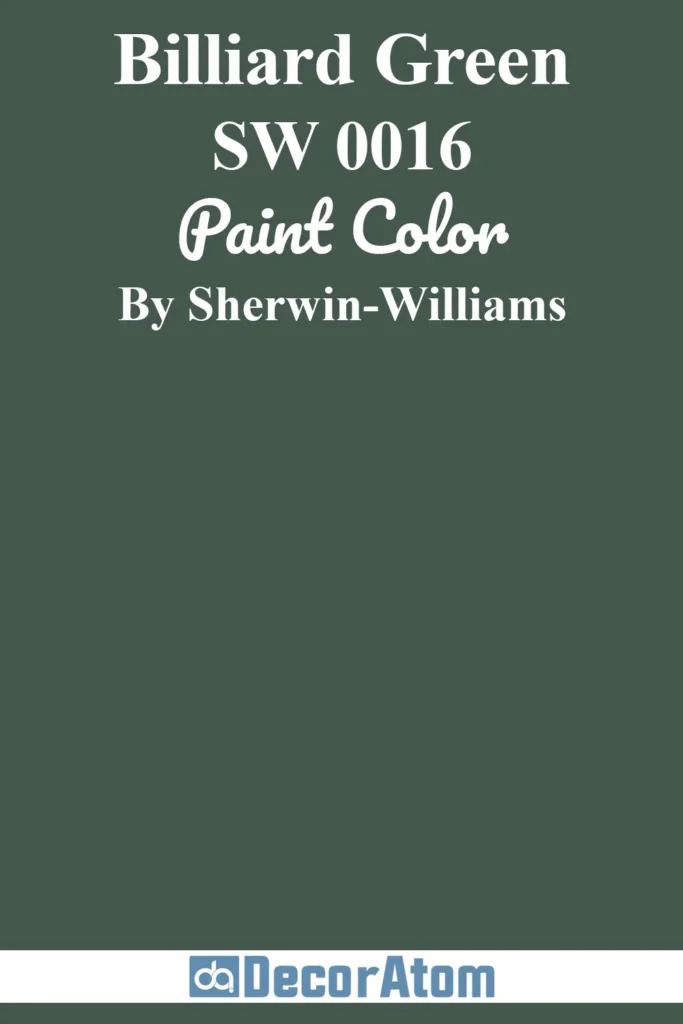
Billiard Green is bold, traditional, and full of character. It has a slight teal undertone that gives it a richness and energy you don’t often find in dark greens.
The color immediately brings to mind vintage game rooms or classic library walls, but in a kid’s room, it becomes something even more exciting—it’s the color of imagination and mystery.
This green would look fantastic in a room with adventure-themed décor, maps on the wall, or books stacked on wooden shelves.
It’s deep and dramatic but not stuffy or overly serious. If you’re going for a look that grows with your child, Billiard Green has the maturity and lasting appeal to transition from early years through the teen phase and beyond.
19. Farrow & Ball Studio Green

Studio Green is one of those colors that shifts depending on the light, and that’s what makes it so intriguing.
In bright natural light, it reads as a rich forest green with slight blue undertones.
But in lower light, it can almost look black—and that gives it a lot of mood and drama.
For a kid’s bedroom, that kind of chameleon effect creates a really cozy, snug atmosphere, especially if you pair it with lighter or whimsical accents.
Studio Green feels artistic, like something out of a storybook illustration.
It’s a fantastic choice for creative kids or for parents who want something elevated but still rooted in nature.
It also works beautifully in nurseries where you want to avoid overly babyish tones and instead build a calming, classic foundation.
20. Benjamin Moore Forest Green

Forest Green does exactly what the name promises—it brings the deep, natural richness of a wooded forest indoors.
This shade is elegant and earthy with a slightly cooler undertone, which helps it feel fresh even with all its depth.
It has an almost vintage feel to it, which makes it a fun choice for parents who love retro or cottage-style décor in their kids’ rooms.
What makes Forest Green special is how it invites in natural elements—wooden furniture, leafy plants, baskets, and handwoven textures all shine when paired with this tone.
It’s soothing, balanced, and completely timeless. It’s also a beautiful choice for shared rooms because it plays nicely with both playful elements and more mature ones.
21. Sherwin Williams Oakmoss

Oakmoss is a gorgeous green with just the right amount of earthiness and depth.
It’s not quite as dark as some of the others in this section, but it’s definitely in the deep green family.
What makes Oakmoss stand out is its warmth—it has slight brown and olive undertones that give it a grounded, almost velvety feel.
It’s an excellent bridge between bold and neutral, which is especially helpful in a kid’s room where you might want a strong base color that doesn’t compete too much with playful artwork or patterned textiles.
I love Oakmoss for creating a peaceful, nature-inspired backdrop.
It works well with creamy whites, soft ochres, or even terracotta tones to give the room a collected, outdoorsy charm that’s still super comfortable for little ones.

